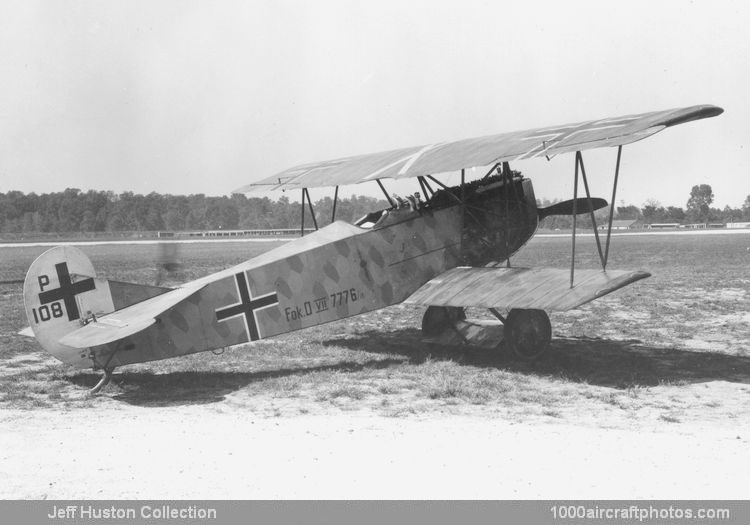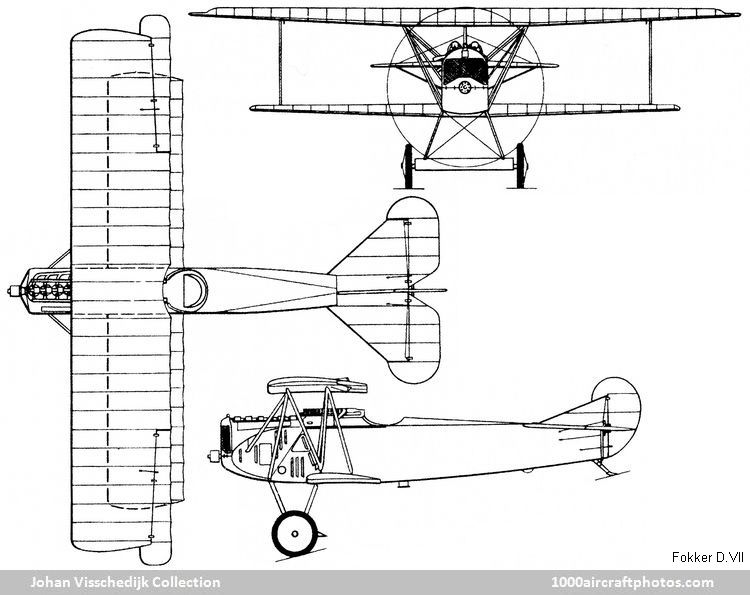Pronounced winning contenders by the Idflieg, these prototypes provided the basis for a fighter to which the designation D.VII was assigned, contracts being placed with Fokker at Schwerin and the Albatros factories at Johannisthal and Schneidemühl. Other prototypes comprised V21, the 200 hp Austro-Daimler-enqined V22 - which was to be evaluated at Aspern in July 1918 - and the 185 hp BMW IIIa-engined V24. This last served as the prototype of the similarly-powered D.VIIF. Armed with two 0.312 in (7.92 mm) LMG 08/15 machine guns, the D III-powered D.VII began to reach the Front in April 1918, followed closely by the BMW IIIa-powered D.VIIF, and license production of the D.VII with the Austro-Daimler engine was undertaken by MAG (Mágyar Altálanos Gépgyár) in Hungary.
In the event, MAG completed only twelve D.VIIs, and these post-war. Fokker produced 877 series D.VIIs (of which six were supplied to MAG as pattern aircraft together with the V22), and 923 and 826 were built respectively by the Johannisthal and Schneidemühl facilities of Albatros. Anthony Fokker smuggled 98 D.VIIs from Germany to the Netherlands after the Armistice, of which 22 went to the LVA (Luchtvaartafdeling, Air Service of the Netherlands Army), twenty to the MLD, six to the KNIL (Koninklijk Nederlands Indisch Leger, Royal Netherlands-Indies Army) and the remaining fifty were sold to the Soviet Union.
Eight D.VIIs and two D.VIIFs were acquired from the Allied Control Commission by the Swiss Fliegertruppe (one of these later being fitted with an Hispano-Suiza 8Fb engine as the D.VIIS) which obtained a further six overhauled D.VIIs in 1925 from the Swiss Alfred Comte concern, which went on to build eight D.VIIs during 1928-1929.
After WW I a total of 142 D.VIIs was shipped to the USA for evaluation and use by the USAAS, at least a dozen of these went to McCook Field and were tested under a Project Number:
|
Project |
German |
USAAS |
Disposition |
Powered by a Mercedes IIIa engine, the D.VII pictured above was tested under the Project Number "P-108".

